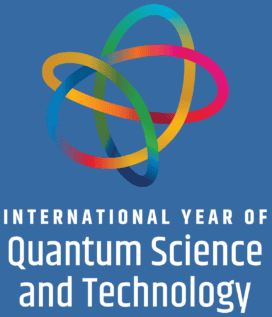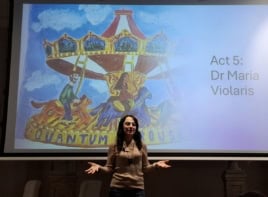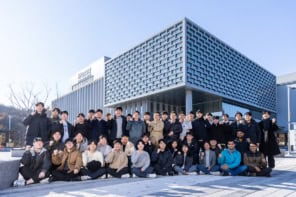
Part of our International Year of Quantum Science and Technology coverage
Travis Humble is director of the Quantum Science Center at Oak Ridge National Laboratory (ORNL) in Tennessee, US – which is run by the US Department of Energy (DOE). The centre links the capabilities of ORNL with other US national labs, universities and companies. He speaks to Hamish Johnston about how the centre makes use of ORNL’s powerful facilities and instruments to create new quantum technologies
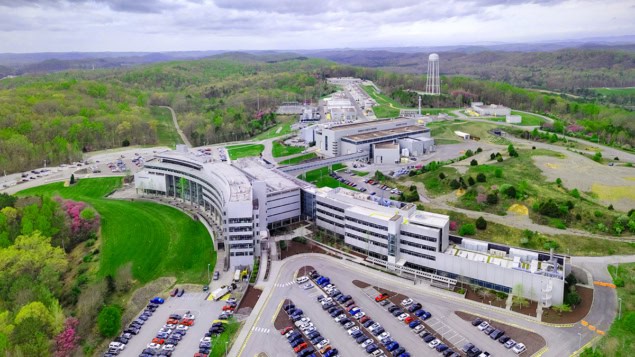
What is the mission of the Quantum Science Center?
The Quantum Science Center is one of five of the DoE’s National Quantum Information Science Research Centers. The Quantum Science Center is a partnership led by Oak Ridge and it includes more than 20 other institutions including universities and companies.
ORNL and the other national laboratories play a crucial role in research and development within the United States. And partnerships play a crucial role in that activity. Some partnerships are with universities, especially individual investigators who require access to the powerful instruments that we develop and maintain. The labs are funded by the DOE, and users can apply to use the instruments or collaborate with our resident scientists to develop research ideas and follow through to publication.
In addition to providing cutting edge facilities to the nation’s scientists, national labs also play an important role in creating a scientific workforce that is educated in how to develop and use a range of scientific infrastructure and instrumentation. These personnel will ensure that scientific breakthroughs will continue to be made and that scientists will continue to have access to the best research facilities.
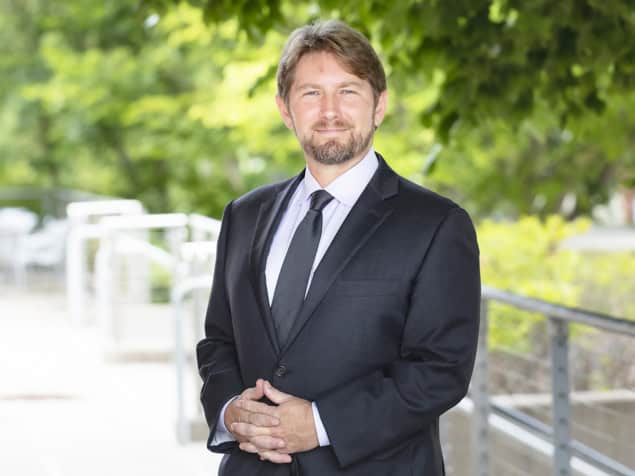
ORNL is home to several facilities for material characterization, including the Spallation Neutron Source (SNS). How is the lab using these facilities to develop new materials for quantum technologies?
ORNL has many unique facilities, including the SNS, which is a user facility of the DOE. It is one of the brightest sources of neutrons in the world, which makes it an incredibly powerful tool for characterizing novel materials.
We are using the SNS to look at some remarkable materials that have useful quantum properties such as topological order and entanglement. These strongly correlated systems have useful electronic or magnetic properties. What makes them so interesting is that under the right conditions they have unique phases in which their electrons or spins are entangled quantum mechanically.
We probe these materials using a range of instruments on the SNS and infer whether or not the materials are entangled. This allows us to identify materials that will be useful for developing new quantum technologies.
What other instruments are used to develop new quantum materials at ORNL?
The SNS is certainly one of our biggest and boldest instruments that we have for characterizing these types of systems, but in no way is it the only one. ORNL is also home to the Center for Nanophase Materials Sciences (CNMS). This is one of the DOE’s Office of Science Nanoscale Science Research Centers and it’s a remarkable facility co-located with the SNS at ORNL. The CNMS enables the synthesis and characterization of new quantum materials with the ultimate goal of gaining control over their useful properties.
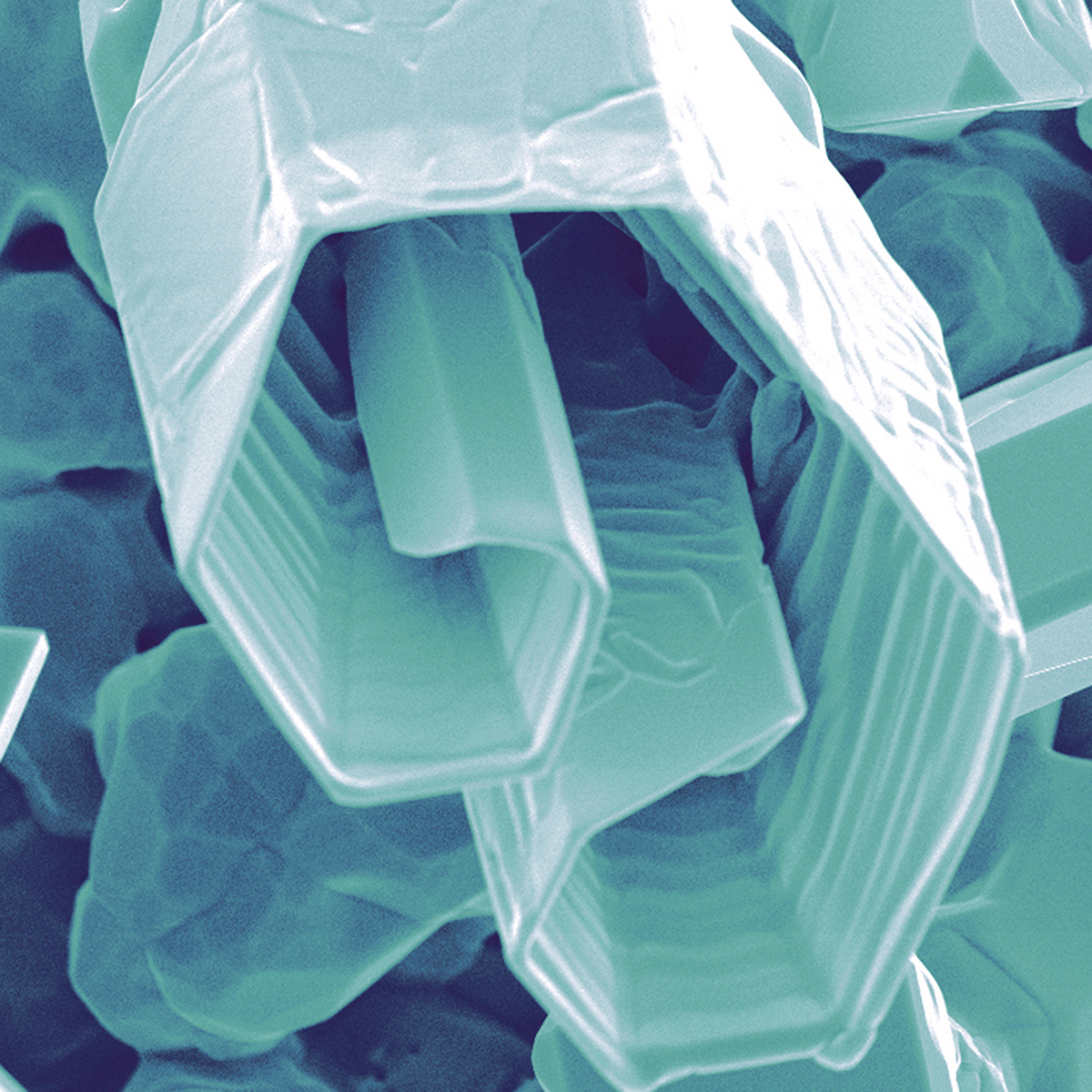
Can you give an example of that work?
We are very interested in a type of material called a spin liquid. It’s a magnetic system where the quantum spins within the material can become entangled with each other and have correlations over very large distances – relative to the size of individual atoms. Using SNS we have detected a signature of entanglement in these materials. That material is ruthenium trichloride and it is one type of quantum magnet that we are studying at ORNL.
The next step is to take materials that have been certified as quantum or entangled and translate them into new types of devices. This is what the CNMS excels and involves fabricating a quantum material into unique geometries; and connecting it to electrodes and other types of control systems that then provide a path to demonstrating novel physics and other types of unique behaviours.
In the case of quantum spin liquids, for example, we believe that they can be translated into a new qubit (quantum bit) technology that can store and process quantum information. We haven’t got there yet, but the tools and capabilities that we have here at Oak Ridge are incredibly empowering for that type of technology development.
ORNL is also famous for its supercomputing capabilities and is home to Frontier, which is one of the world’s most powerful supercomputers. How does the lab’s high-performance computing expertise support the use of its instrumentation for the development of new quantum materials?
High-performance computing (HPC) has been a remarkable and disruptive tool because it allows us to explain and understand the physics of complex systems and how these systems can be controlled and ultimately exploited to create new technologies. One of the most remarkable developments in the last several years has been the application of HPC to machine learning and artificial intelligence.
This benefits material science, chemistry, biology, and the study of other complex physical systems, where modelling and simulation play a huge role in our scientific discovery process. And supercomputers are also used in the design and optimization of products that are based on those complex physical systems. In fact, many people would say that next to theory and experiment, computation is a third pillar of the R&D ecosystem.
In my view HPC is just as powerful a research tool as the SNS or the CNMS when it comes to understanding and exploring these complex physical systems.
Why is it important to have the SNS, CNMS, Frontier and other facilities co-located at ORNL?
This integration allows our researchers to very quickly compare computer simulations to experimental data from neutron scattering and other experiments. This results in a very tight and coordinated cycle of development that ensures that we get to the best results the fastest way possible. This way of working also highlights the multidisciplinary nature of how we operate – something we call “team science”.
This requires good coordination between all parties, you have to have clarity in your communication, and you have to have a very clear vision about the goals that you’re trying to accomplish. This ensures that everyone has a common understanding of the mission of ORNL and the DOE.
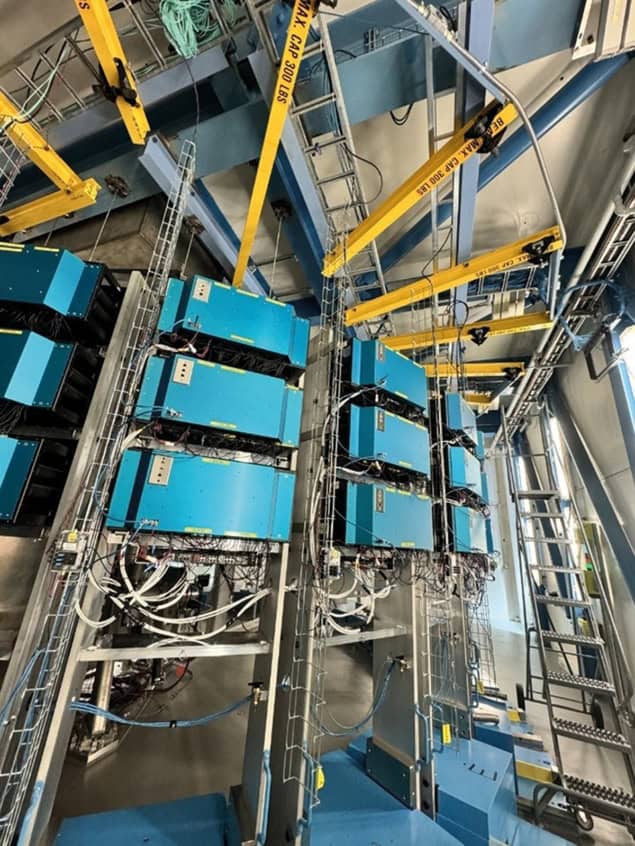
How do you ensure that collaboration across different instruments and disciplines is done efficiently?
In my experience, the ability of team members to communicate efficiently, to understand each other’s concepts and reasoning, and to translate back and forth across these disciplinary boundaries is probably one of the central and most important parts of this type of scientific development. This is crucial to ensuring that people using a common infrastructure gain powerful scientific results.
For example, when we talk about qubits in quantum science and technology, people working in different subdisciplines have slightly different definitions of that word. For computer scientists, a qubit is a logical representation of information that we manipulate through quantum algorithms. In contrast, material scientists think of a qubit as a two-level quantum system that is embedded in some electronic or magnetic degree of freedom. They will often see qubits as being independent of the logical and computational connections that are necessary to create quantum computers. Bridging such differences is an important aspect of multidisciplinary research and amplifies success at our facilities.
I would say that the facilities and the ecosystem that we’ve created within the laboratory support interchange and collaboration across disciplines. The instruments enable new fundamental discoveries and the science is then developed and translated into new technologies.
That is a multi-step process and can only succeed when you have a team of people working together on large-scale problems – and that team is always multidisciplinary.
Can you talk about your partnerships with industry
In the last decade quantum science and technology has emerged as a national priority in terms of science, industry and national security. This interest is driven by concerns for national security as well as the economic advantage – in terms of new products and services – that quantum brings. Innovation in the energy sector is an important example of how quantum has important implications for both security and the economy.
As a result, US national laboratories are partnering very closely with industry to provide access to instruments at the SNS, the CNMS and other facilities. At the same time, our researchers get access to technologies developed by industry – especially commercial quantum computing platforms.
I think that one of the most exciting things for us at ORNL today is gaining insights into these new quantum products and services and adapting this knowledge into our own scientific discovery workflows.
- You can listen to the full interview with Travis Humble in the Physics World Weekly podcast
This article forms part of Physics World‘s contribution to the 2025 International Year of Quantum Science and Technology (IYQ), which aims to raise global awareness of quantum physics and its applications.
Stayed tuned to Physics World and our international partners throughout the year for more coverage of the IYQ.
Find out more on our quantum channel.
